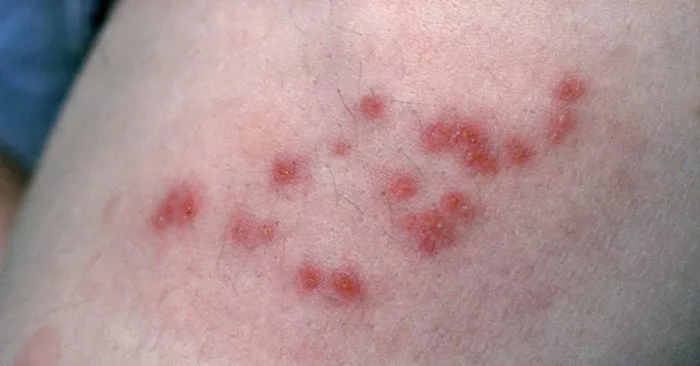Shingles, medically known as herpes zoster, is a viral infection caused by the reactivation of the varicella-zoster virus, the same virus responsible for chickenpox. While shingles typically manifests as a painful rash, its effects extend beyond the skin, deeply impacting the intricate network of nerves within the body. This article delves into the neurological consequences of shingles, elucidating the mechanisms through which the virus affects nerves and exploring the resulting symptoms and complications.
The Pathophysiology of Shingles: A Nerve-Centric Perspective
To comprehend the neurological ramifications of shingles, it is crucial to first understand its pathophysiology. After an individual contracts chickenpox, the varicella-zoster virus remains dormant within sensory nerve cells along the spinal cord and cranial nerves. However, under certain circumstances, such as weakened immunity or aging, the virus can reactivate, traveling along nerve fibers to the skin and causing the characteristic rash and associated pain.
The reactivation of the varicella-zoster virus sets off a cascade of events that primarily target the nervous system. Upon reactivation, the virus replicates within the sensory nerve fibers, leading to inflammation and damage to the surrounding tissue. This inflammatory response not only triggers the development of the painful rash but also disrupts the normal functioning of nerves, resulting in a range of neurological symptoms.
Nerve Damage and Neuropathic Pain: The Predominant Manifestations
One of the hallmark features of shingles is neuropathic pain, which arises from the damage inflicted upon nerves by the virus. This type of pain is characterized by its burning, shooting, or stabbing quality and often persists long after the rash has healed—a condition known as postherpetic neuralgia (PHN). PHN can be debilitating, significantly impairing quality of life and hindering daily activities.
The neuropathic pain associated with shingles can be attributed to various factors, including the direct injury to nerve fibers caused by viral replication and inflammation, as well as the sensitization of nerves to pain signals. Additionally, the disruption of neuronal signaling pathways contributes to the development of abnormal sensations, such as tingling or itching, further exacerbating discomfort.
Sensory Disturbances: Altered Perception and Sensitivity
Beyond neuropathic pain, shingles can induce sensory disturbances that alter the perception and sensitivity of affected nerves. Individuals may experience heightened sensitivity to touch (hyperesthesia) or a decreased ability to sense touch (hypoesthesia) in the area affected by the rash. These sensory abnormalities can extend beyond the dermatomal distribution of the rash, affecting neighboring areas innervated by the same nerve roots.
Furthermore, some individuals may develop sensory deficits, experiencing numbness or loss of sensation in the affected area. These deficits can pose challenges in detecting potential injuries or hazards, increasing the risk of accidental trauma and complications. The severity and duration of sensory disturbances can vary among individuals, influenced by factors such as the extent of nerve damage and the presence of underlying medical conditions.
Motor Dysfunction: Impairments in Muscle Function
While shingles predominantly affects sensory nerves, it can also impact motor nerves, leading to impairments in muscle function. Motor dysfunction may manifest as weakness, muscle spasms, or involuntary movements in the vicinity of the rash. In severe cases, individuals may experience paralysis or paresis, rendering them unable to move certain muscles effectively.
The mechanisms underlying motor dysfunction in shingles are multifaceted, involving both direct nerve damage and secondary effects stemming from pain and inflammation. Disruption of motor nerve signaling can compromise the coordination and control of muscles, impairing mobility and dexterity. Rehabilitation and physical therapy may be necessary to regain muscle strength and function in individuals affected by motor deficits.
Autonomic Dysfunction: Dysregulation of Involuntary Functions
In addition to sensory and motor disturbances, shingles can disrupt autonomic nervous system function, leading to a range of autonomic dysfunctions. The autonomic nervous system controls involuntary bodily functions, including heart rate, blood pressure, digestion, and perspiration. Dysfunction of this system can manifest as abnormalities in these physiological processes.
Common autonomic manifestations of shingles include changes in blood pressure and heart rate, gastrointestinal disturbances such as nausea and constipation, and alterations in sweating patterns. These symptoms can vary in severity and duration, depending on the extent of autonomic nerve involvement and individual factors. Management of autonomic dysfunction may involve symptomatic treatment and targeted interventions to address specific manifestations.
Long-Term Complications and Prognosis
While most cases of shingles resolve within a few weeks with appropriate treatment, some individuals may experience long-term complications and lingering neurological sequelae. Postherpetic neuralgia, characterized by persistent neuropathic pain, is the most common complication of shingles, affecting a significant proportion of affected individuals, particularly older adults.
In addition to postherpetic neuralgia, other potential long-term complications of shingles include sensory deficits, motor impairments, and autonomic dysfunction. These complications can have profound implications for quality of life, necessitating ongoing management and support. Early recognition and treatment of shingles, along with strategies to mitigate nerve damage and alleviate symptoms, are essential for minimizing the risk of long-term complications and optimizing outcomes.
Conclusion
Shingles exerts a profound impact on the nervous system, disrupting the intricate network of nerves and giving rise to a spectrum of neurological manifestations. From neuropathic pain and sensory disturbances to motor dysfunction and autonomic dysregulation, the consequences of shingles extend far beyond the confines of the rash, profoundly affecting the lives of affected individuals.
Understanding the neurological consequences of shingles is paramount for healthcare professionals involved in the diagnosis, management, and rehabilitation of affected individuals. By elucidating the underlying mechanisms and clinical manifestations of shingles-related nerve damage, healthcare providers can tailor treatment approaches to address the diverse array of symptoms and complications encountered in clinical practice.
As research continues to unravel the complexities of shingles and its impact on the nervous system, efforts to improve prevention, early detection, and treatment strategies are paramount. Through interdisciplinary collaboration and a comprehensive understanding of the neurological terrain of shingles, we can strive to alleviate suffering, enhance quality of life, and empower individuals affected by this debilitating condition.
























